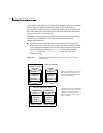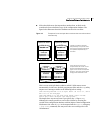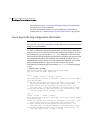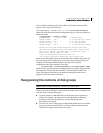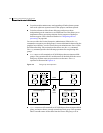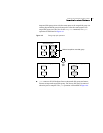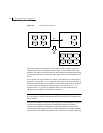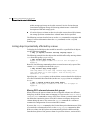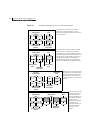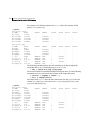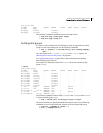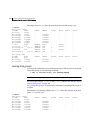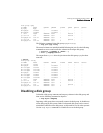
200 Creating and administering disk groups
Reorganizing the contents of disk groups
within storage pools may not be split or moved. See the Veritas Storage
Foundation Intelligent Storage Provisioning Administrator’s Guide for a
description of ISP and storage pools.
■ If a cache object or volume set that is to be split or moved uses ISP volumes,
the storage pool that contains these volumes must also be specified.
The following sections describe how to use the vxdg command to reorganize disk
groups. For more information about the
vxdg command, see the vxdg(1M)
manual page.
Listing objects potentially affected by a move
To display the VxVM objects that would be moved for a specified list of objects,
use the following command:
# vxdg [-o expand] listmove sourcedg targetdg object ...
The following example lists the objects that would be affected by moving volume
vol1 from disk group mydg to newdg:
# vxdg listmove mydg newdg vol1
mydg01 c0t1d0 mydg05 c1t96d0 vol1 vol1-01 vol1-02 mydg01-01
mydg05-01
However, the following command produces an error because only a part of the
volume vol1 is configured on the disk mydg01:
# vxdg listmove mydg newdg mydg01
VxVM vxdg ERROR V-5-2-4597 vxdg listmove mydg newdg failed
VxVM vxdg ERROR V-5-2-3091 mydg05 : Disk not moving, but
subdisks on it are
Specifying the -o expand option, as shown below, ensures that the list of objects
to be moved includes the other disks (in this case, mydg05) that are configured
in vol1:
# vxdg -o expand listmove mydg newdg mydg01
mydg01 c0t1d0 mydg05 c1t96d0 vol1 vol1-01 vol1-02 mydg01-01
mydg05-01
Moving DCO volumes between disk groups
When you move the parent volume (such as a snapshot volume) to a different
disk group, its DCO volume must accompany it. If you use the
vxassist addlog,
vxmake or vxdco commands to set up a DCO for a volume, you must ensure that
the disks that contain the plexes of the DCO volume accompany their parent
volume during the move. You can use the
vxprint command on a volume to
examine the configuration of its associated DCO volume.
If you use the vxassist command or the Veritas Enterprise Administrator (VEA)
to create both a volume and its DCO, or the
vxsnap prepare command to add a
DCO to a volume, the DCO plexes are automatically placed on different disks
from the data plexes of the parent volume. In previous releases, version 0 DCO



